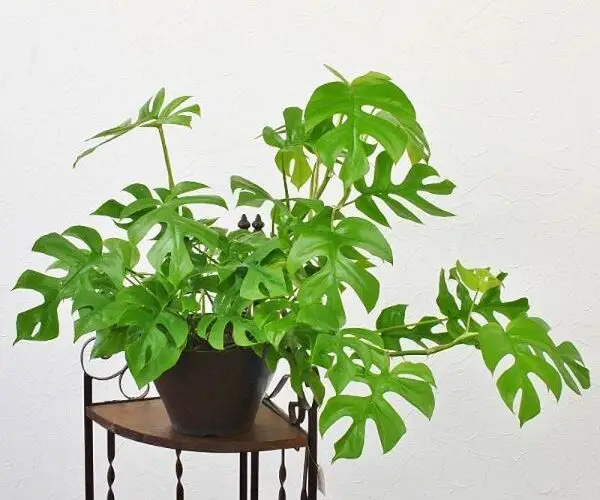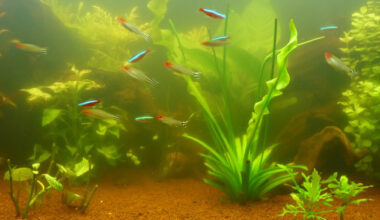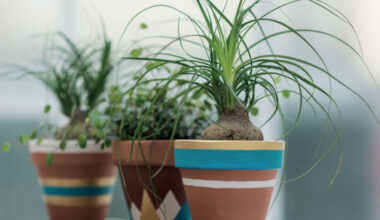The split leaves of Baby Monstera are reminiscent of one of its cousins, Monstera deliciosa. But it is an entirely different plant that is very popular!
A little rare to find on sale, this pretty vine plant has striking fenestrated leaves.
It is sometimes called the “mini monstera plant” because it looks like its parent but in miniature. Persistent and luxuriant, this tropical is an excellent candidate as a house plant. And if you live in a warm climate, you can also coax it to grow outside!
Contents
Where to plant Baby Monstera
The Baby Monstera is easily grown in pots, in a room not necessarily very brightly lit because it is necessary to avoid direct sunlight at least in summer.
Plan to climb it on a coconut fibre stake, a claustra or along a wall and don’t hesitate to prune it if necessary in order to refill the base. A well-developed plant can root in another pot thanks to its aerial roots (don’t cut them!) and benefit from a nutritional supplement.
In winter, the plant can withstand cool temperatures of around 50°F even if its growth is slowed down. It will thrive in a 68°F room as long as you control the watering.
When to plant the Baby Monstera?
Plant the Baby Monstera in spring or summer.
How to plant the Baby Monstera?
Provide a rich substrate (half soil, half garden soil) or a mixture of heather soil, leaf soil and some decomposed manure.
Choose a large, pierced pot, 2-3 l to start with, to give the roots plenty of time to develop. Don’t forget to install a layer of clay balls in the bottom to ensure good drainage.
Caring for Baby Monstera
Bright, indirect light is ideal for your Baby Monstera. Its leaves are shaped to make the most of the ambient light in its area. Although it cannot tolerate much direct sunlight, bright but indirect light mimics what it gets naturally in the wild. If you lack a good outdoor location that provides the right lighting conditions, use a 20% to 40% shade fabric to block some of the harshest rays and soften the sunlight.
Those who grow it indoors should also ensure that it receives plenty of light. Avoid direct sunlight as it can burn delicate leaves. East facing windows often provide a good amount of light to this plant, and a growing light can add extra ambient lighting. Avoid low light conditions that will slow the plant’s growth and reduce its foliage.
Ideal temperatures are between 55 and 85°F. It tolerates slightly cooler temperatures but is not frost resistant at all. It is grown in zones 9b-12, but works best in zone 11. For zones 9b-10, it should be brought indoors if it is less than 55°F. Make sure it has lots of bright indirect light wherever it is placed!
Watering the Baby Monstera
The frequency of watering your plant is as follows: its growth period (spring-summer) give it a drink as soon as the soil is dry. In winter, reduce the water supply for your baby monstera and let the substrate dry well between waterings. You can also regularly mist the leaves of your plant to give it a good hygrometry.
Replenish the Baby Monstera
This plant is partial enough to have a lot of place for the development of the roots. When you put it in a pot, make sure it has a deep container. Suppose a large specimen will need a pot at least 10″ in diameter, but it can grow to 20″ widths over time. Choose a pot that is an inch or two wider than your existing pot, with at least 10″ deep and maybe more.
When repotting, be gentle with the plant. Remove it from its pot and dust the old soil away from the root system. Check for symptoms of root rot and remove any that have formed with a sterile knife or pruning shears, making sure to re-sterilize between cuts. Repot to the same depth as before with your prepared and available potting soil.
Pruning the Baby Monstera
Pruning and training are important for this plant. As a climber, Baby Monstera likes to hold on to something, so it is important to provide a solid trellis or solid stakes. As it grows, its aerial roots will lock onto the support you have provided, but you can help by using soft cloth strips (old t-shirt material is fine) or a wide plastic plant support tape.
Pruning is mainly about removing diseased or pest damaged material and keeping it at a specific size. It can also be used to reduce leggy growth resulting from a lack of light reaching one side of the plant. Use clean shears to carefully cut off excess growth, but do not remove too much from the plant at any one time. Reducing it up to 25% is good, but beyond that, you risk damaging your plant.
Multiply the Baby Monstera
The propagation of Baby Monstera is surprisingly easy. Select healthy cuttings that have at least a few leaf knots. Set your cuttings in a glass of water or in wet soil. Make sure the lowest leaf node is below the surface. Roots will form from this point.
If you use water, replace it with fresh water at least once a day. Once the roots are at least an inch or two long, you can transfer your cuttings into a potting soil. With those that started directly in the mix, keep the cuttings alive and wait at least a month, then pull very lightly on them to see if there is any resistance. If there is, roots have formed and you can treat it as a new plant.
Pests and diseases
The usual parasites of houseplants can theoretically attack Baby Monstera – spider mites, mealybugs, scale insects, etc. – but they can also be used as a source of food. -But in fact, it is a plant that can be attractive to pests and there are rarely problems of this type.
Rot caused by over-watering or growing in a pot without a drainage hole is one of the few diseases that seem to affect it. Yes, you need a potting soil that stays relatively moist, but you don’t want to drown it either.
Toxicity
Like most of the Araceae, this plant is a little toxic and chewing will cause an instantaneous sensation of painful burning because of the raphides mentioned above.
This will quickly stop the attack and normally there is no other consequence than slightly irritated lips or tongue, but, despite this, it is always best to keep this plant (and all the Araceae) out of the reach of children and pets.
Summary
This Baby Monstera is very appreciated for its large, very cut, shiny green leaves that last all year round and for its rapid growth.
The flowering is very rare indoors, it is manifested by a creamy white spathe inflorescence which will give way to a sticky fruit a little like a small dark green corn cob.









